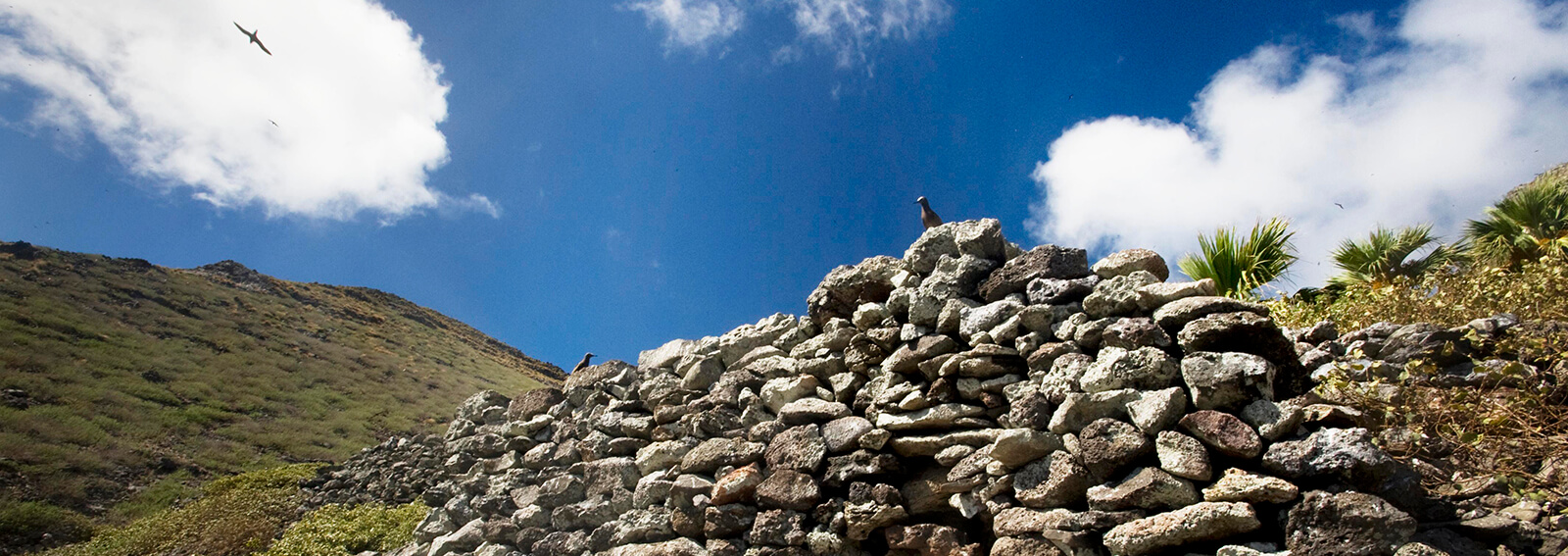The Hawaiian Archipelago is a Genealogy
Stories from the Blue: Kalani Quiocho

Kalani Quiocho grew up in Hilo, Hawai‘i, raised by his large family and great grandparents who were traditional medicinal healers. The islands of Hawaiʻi have been his home and his wellspring. He currently serves as the Native Hawaiian program specialist for Papahānaumokuākea Marine National Monument, which protects the waters surrounding the Northwestern Hawaiian Islands. This is his Story from the Blue.
The ocean was my first origin space. I lived right across the street. I grew up in Keaukaha, a Hawaiian homestead, and the ocean there is a childhood friend, a first crush, my whole family, and my wedding partner. When it rains in Hilo, it can pour hard, and as a young boy one of my most favorite things to do on rainy days was to go to the ocean and dive underwater. It was a silent escape that brought me joy. It was my sanctuary. One day, during one of these escapes, I encountered a tiger shark. His presence salted my soul and my senses are preserved in this moment. That is how I learned reverence. That tiger shark helped me to see my connections with other things and this has been one of the ways I know who I am.
I used to work as a fisheries observer. The first time I experienced a shark being gutted was traumatic, very different from my encounter with that first tiger shark from home. This other shark’s blood poured hard and I couldn’t escape. I couldn’t dive underwater. That shark will always be the sacrifice that transformed me. He made me see that I have impact, that I am part of this larger system and I have agency in my choices and how I exist.

I’m committed to ensuring that traditional knowledge and Indigenous environmental ethics are represented in parity with conventional science and conservation. Our culture is the method by which we do our science and commune with nature. We have homeland perspectives and place-based knowledge that are generationally-informed through ancestral experiences. They can contribute to global existence.
The entire Hawaiian archipelago is a genealogy. Hawaiʻi emerges in the east where the sun rises and the islands are volcanically birthed from the oceanic womb. Extending westward, the sunsets and the islands return to their source. The oldest islands, almost 30 million years old at the west end, are the elder islands. Papahānaumokuākea is our origin space, the place where our oral traditions derive from. It’s a place where spirits exist and where ancestors return to.
Papahānaumokuākea is our origin space, the place where our oral traditions derive from. It’s a place where spirits exist and where ancestors return to.”
The name of Papahānaumokuākea acknowledges two prominent ancestors: Papahānaumoku, the broad expansive earth who gives birth to islands through the oceanic womb, and Wākea, sky father, the broad expanse that allows us to access time and space. Naming the monument for Papahānaumoku and Wākea is an acknowledgment of the ancestral connections of people and place. These islands are familial, we’re related to them through the bones of our ancestors.
We must remember the most basic truths about our relationships with our environment and each other. Protected areas like Papahānaumokuākea preserve these ancestral memories and perpetuate our existence. And as we envision our future, let's think about what kind of ancestors we want to be.


